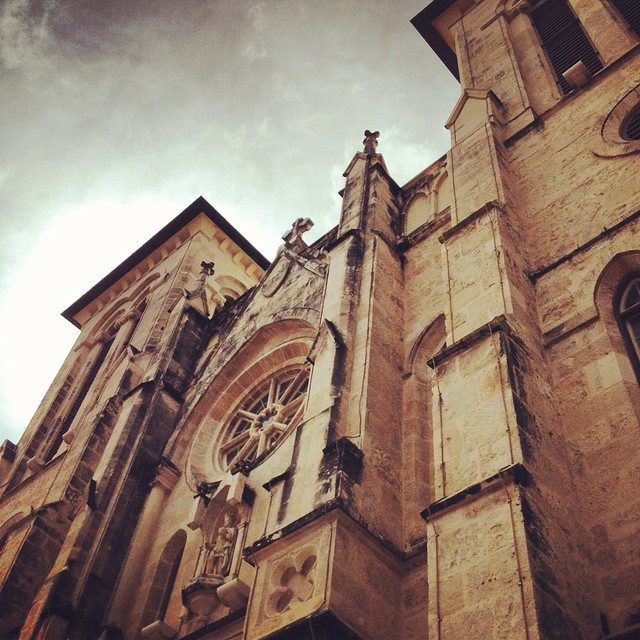My travels and accommodation were paid for by the Home2 Suites by Hilton — you can’t beat the location if you want to see the sights in San Antonio. Visit San Antonio arranged for my tour of the Alamo.
“You see that flowering olive tree? That’s where Davy Crockett died.”
Wade, my personal guide, was a serious and polite young man. He’d spent the better part of an hour making what remains of the Alamo complex come very much alive for me. Crockett was his hero; he wore a Crockett button on his red guide vest and he told me he had a tattoo of the Alamo under the tight white sleeve of his shirt.
I was not too embarrassed to admit that I’d entirely forgotten this period in American history. Wade was untroubled by this, it’s his job to help folks like me rediscover the importance of what happened here. His gift was his ability to place the siege of the Alamo in historical context; it was not just 13 winter days in 1836, the battle was a cornerstone in the history of Texas and the Texas Revolution.
By the time we stood in the plaza peering through the murky smoke of history, I imagined General Santa Anna as a sort of Napoleonic egomaniac and the revolutionaries at the Alamo as zealots, angry, righteous in their beliefs that this place, this land, was theirs. Everyone must have been so tired. Santa Anna’s troops had marched hundreds of miles through winter blizzards. And the ragged occupants of the Alamo — there were not enough of them to make sure that anyone had the chance to rest.
“They spared the women and children. They got two dollars and a blanket and a directive: “Tell everyone what happened here.”” I pictured all of this. Dirty, exhausted, heartbroken, Susanna Dickinson carried her child, Angelina, out into the once enclosed courtyard, littered with the dead.
Because I had forgotten the story, I did not remember that “Remember the Alamo” was a battle cry shouted elsewhere, at San Jacinto, where Santa Anna was captured. I wondered how the story was — is — told in Mexican history, if Santa Anna is presented as a rogue dictator or an enforcer against rebellious colonists. South of the border, are Texas revolutionaries pirates and opportunists instead of, as they are here, great heroes of the West?
I did not expect the Alamo to be in the heart of the city. Where the homes of Native American converts once stood, there’s a Ripley’s Believe It or Not and a Guiness World Records Museum that displays a giant red white and blue guitar in the entry way. The nearby IMAX theater shows a movie about the battle of the Alamo on their big, big, screen and little red trolleys circle the plaza, starting and stopping in front of a Haagen Daaz ice cream stand. On the day I visited, there were two large groups in town. “Some kind of women’s convention,” said Wade, “and an insurance thing.”
That afternoon I stumbled into the San Fernando Cathedral; the ashes of the Texas Heroes are enshrined here in a marble coffin. Men with Mexican faces knelt at the altars to the Virgin in silent prayer. On the plaza in front of city hall, a bridal party posed for pictures, a bride in white, the men in big white cowboy hats. It was hot and the sky over head was silver and I imagined this place as Mexico.
The ghosts of history are everywhere, we summon them when we ask the most basic question: What happened here? Of course I will remember the Alamo, now that I have visited the ashes, how can I forget?

